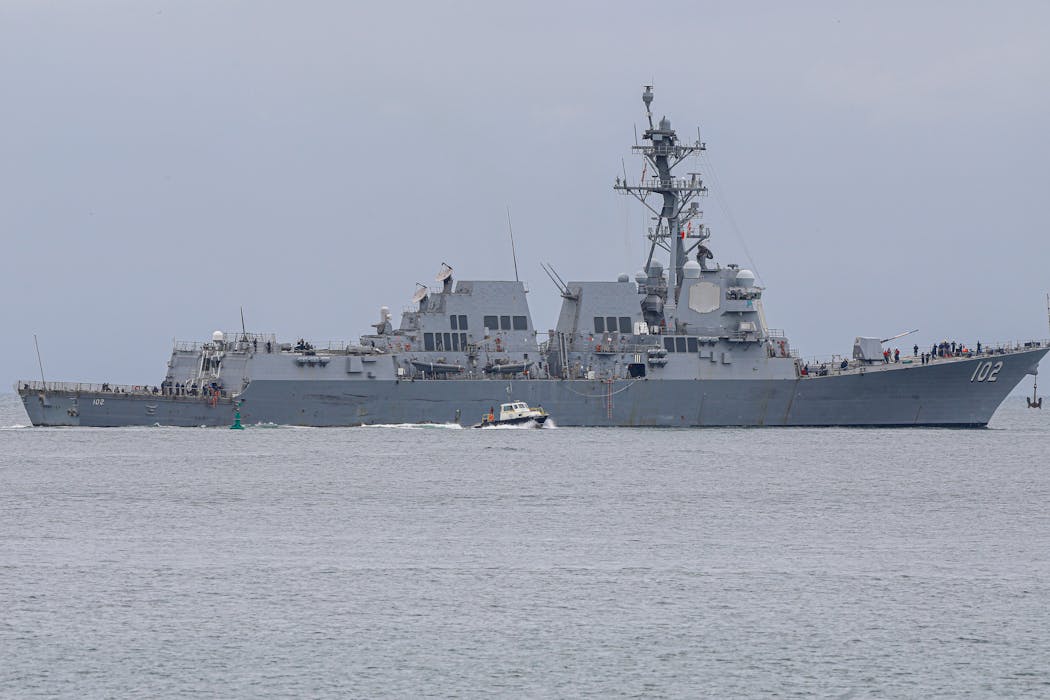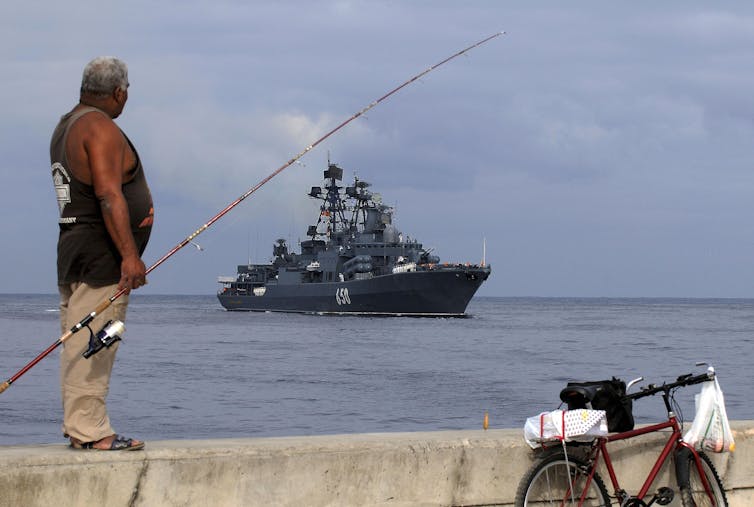Gunboat diplomacy: How classic naval coercion has evolved into hybrid warfare on the water
- Gunboat diplomacy, a classic naval coercion tactic, has evolved into hybrid warfare on the water, where states use limited force and other tools to shape behavior without resorting to war.
- The modern version of gunboat diplomacy involves a mix of military, law enforcement, and paramilitary actions, such as blockades, patrols, boardings, and cyber interference, to make routine activity at sea riskier, slower, and more expensive.
- Global powers like the US, China, and Russia are competing in the “gray zone” between peace and war, using maritime hybrid warfare to assert influence and control over critical domains such as global economics, technology standards, information, and law.
- The use of gunboat diplomacy has become more sophisticated, with states employing tools like electronic warfare, seabed infrastructure disruption, and cyber interference to raise risk and uncertainty without resorting to violence.
- Gunboat diplomacy remains a relevant strategy in the 21st century, as nations update an old tactic to navigate complex waterscapes and assert influence in a rapidly changing global environment.

Over the summer, the United States deployed warships to the Caribbean – ostensibly to menace drug traffickers but also as a none-too-subtle warning to Venezuela. Earlier in the year, a U.S. Navy destroyer bobbed along waters close to Iran for similar reasons. And in the Taiwan Straits and Pacific, China and the U.S. frequently show off their respective maritime military might.
Close to 200 years after first being used to assert geopolitical dominance, gunboat diplomacy is very much alive and well.
In fact, the tactics employed by the U.S., China and others today fit naval strategist James Cable’s classic formulation for gunboat diplomacy as “the use or threat of limited naval force, otherwise than as an act of war, in order to secure advantage or avert loss.”
The ships, boats and objectives have shifted since Cable first penned his now-classic definition in 1971, to be sure. But the core logic is the same: Conducted in tandem with political diplomacy, deploying state-of-the-art military vessels off or near a rival’s coast makes one hell of a statement.
Gunboat diplomacy sets sail
Gunboat diplomacy originally took shape in the mid-19th century during an era of industrial navies, imperial rivalry and weak international law.
Steam power and heavy guns delivered mobility and shock, while diplomacy often happened via a few warships off a harbor, a short blockade or a punitive raid. These were highly visible acts, clearly attributable and designed to stop just short of war.
U.S. Navy Commodore Matthew Perry’s fleet known as “Black Ships” on account of their painted hulls are seen as the archetype. Anchoring in Tokyo Bay throughout 1853–54, they helped secure the Treaty of Kanagawa in 1854, forcibly opening the Japanese ports of Shimoda and Hakodate to American ships.
Similarly, during the Don Pacifico affair of 1850, British navy squadrons pressured Greece to compensate a British subject.
A half-century later, Britain, Germany and Italy united to impose a naval blockade on Venezuela, seizing ships and customs houses to force the Venezuelan government to pay its foreign debts.
In each case, a limited naval force was openly brandished at a chokepoint or capital to win a narrow concession and then withdraw.
Troubled postwar waters
After 1945, nuclear risk, alliance politics and evolving maritime law made traditional gunboat diplomacy less attractive – and riskier.
As a result, the method adapted. Coercion shifted toward temporary, reversible shows of force and tools such as law enforcement actions at sea, patrols, boardings and embargo enforcement, rather than outright coercion or punishments.
The U.S.’s 1962 “quarantine” of Cuba – deliberately not called a “blockade” – used naval power to halt missile shipments from the Soviet Union while managing escalation and legal exposure. At the other end of the spectrum, Iceland’s Cod Wars from 1958 to 1976) pitted coast guard cutters and net-cutters against British trawlers. Controlled ramming and “lawfare” pushed fishing limits outward without triggering a shooting war between allies.
The classic logic of gunboat diplomacy endured, but it was increasingly hedged by law, alliance relations and fear of nuclear escalation.

STR/AFP via Getty Images
Maritime policy in the modern age
Today global and regional great powers jostle with one another for power and influence across the intertwined domains of global economics, technology standards, information and law. That geopolitical environment has further called for adaptation of gunboat diplomacy.
It has resulted in states being pushed to compete with one another in the gray zone between peace and war.
Analysts now describe a “maritime hybrid warfare” rather than out-and-out naval confrontation. This consists of a persistent, below-threshold uses of legal, informational and paramilitary tools alongside limited force to make routine activity at sea – transits, resupply, repairs – riskier, slower and more expensive.
The tool kit of maritime hybrid warfare blends nonmilitary coast guards with maritime militias, legal moves, cyber and electronic interference and pressure on undersea infrastructure.
In the South China Sea, China’s coast guard and maritime militia have blocked, rammed and used high-pressure water cannons to disrupt Philippine resupply at disputed islands. Beijing presents such actions as law enforcement, but the effect is coercive restraint of movement at sea.
In the Baltic–North Atlantic, the 2023 damage to the Balticconnector gas pipeline and nearby telecom cables – linked by investigators to an anchor drag from the Hong Kong-registered New Polar Bear – and persistent GPS jamming allegedly emanating from the Russian exclave of Kaliningrad show how seabed infrastructure and electronic warfare can raise risk and uncertainty without a shot being fired.
And then there is the U.S.
Since early September 2025, counternarcotics and maritime security operations in the southern Caribbean have involved a conspicuous U.S. Navy and Coast Guard presence, high-seas interdictions and publicly released videos of precision strikes on small boats near Venezuela.
The Trump administration has framed these actions as part of a “non-international armed conflict” with drug cartels. But functionally, this is gunboat diplomacy.
Indeed, gunboat diplomacy remains what it has always been: the application of limited, credible maritime power to shape the behavior of other states. Only now, nations have found a way to update an old strategy to make it relevant – and useful – to navigating a 21st-century waterscape.
This article is part of a series explaining foreign policy terms commonly used but rarely explained.
![]()
Andrew Latham does not work for, consult, own shares in or receive funding from any company or organization that would benefit from this article, and has disclosed no relevant affiliations beyond their academic appointment.
